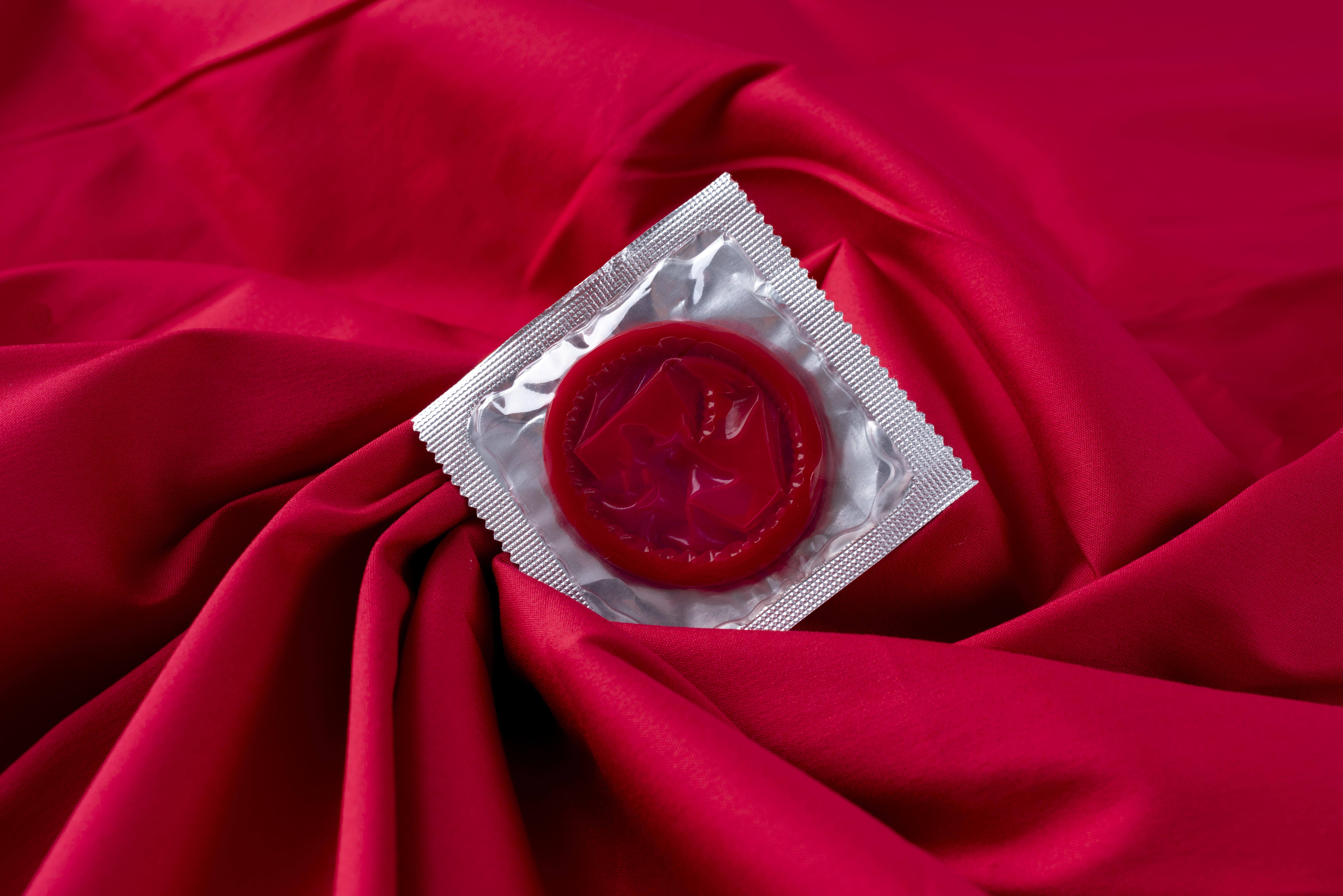Syphilis 101: Early Signs, Diagnosis, and Why Testing Matters

What is Syphilis?
Syphilis, caused by the bacterium Treponema pallidum (TP), is a sexually transmitted infection that remains a major global public health concern. Many cases of syphilis are asymptomatic, however, if left untreated for a number of years there can be significant health complications.
While syphilis is both preventable and curable, cases continue to rise across populations. In Australia, reported cases have tripled over the past 10 years[i], and globally there were 8 million reported cases in adults aged between 15-49 in 2022 alone [ii]. These statistics highlight the critical need for increased awareness, testing, and prevention efforts to address this escalating health issue.
Syphilis can affect anyone, but certain groups are disproportionately impacted. For instance, on a global scale, an estimated 7.5% of gay men and other men who have sex with men are affected by syphilis, compared to just 0.5% of men in the general population[iii]. In Australia specifically, there are disproportionately high rates of syphilis in young Aboriginal and Torres Strait Islander people living in northern, central and southern Australia[iv].
Atomo Diagnostics is committed to playing a pivotal role in improving access to syphilis testing worldwide. By working in collaboration with partners, the company aims to expand the availability of rapid, reliable testing solutions, helping to reduce the global burden of syphilis. Through these efforts, Atomo Diagnostics seeks to make a significant impact in preventing and managing the disease, particularly in underserved populations.
Read on to learn more.
How is Syphilis Transmitted?
Syphilis can be transmitted through vaginal, anal, and oral sex, as well as during pregnancy, a condition known as congenital syphilis. Syphilis can also be transmitted through direct skin-to-skin contact with sores or rashes on the genitals, anus, mouth, lips, or other areas of the skin. Finally, syphilis can also be spread through blood transfusions.

Congenital syphilis occurs when a woman with syphilis passes the infection on to a child during pregnancy or childbirth
Transmission most commonly occurs during the early stages of the infection, typically within the first two years after exposure, when the disease is most contagious. Syphilis is highly contagious during the first two years of infection, especially in the primary and secondary stages, and even in the early phase of the latent stage. It can also be passed from an infected mother to her unborn baby during pregnancy[v].
Syphilis and Symptoms
Many people with syphilis may not notice any syphilis symptoms, and they can also go undetected by healthcare providers. Syphilis progresses through several stages, each with its own set of symptoms. While the symptoms of syphilis in men and symptoms of syphilis in women are largely the same, there are some subtle differences in how their presentation.
Syphilis Stages:
The first stage, primary syphilis, typically lasts about 21 days and is marked by the appearance of a round, painless sore called a syphilis chancre, which can form on the genitals, anus, or other areas. In men, the chancre typically appears on the penis but can also form on the scrotum, anus, or inside the mouth. In women, it most commonly develops on the vulva or vagina, though it may also appear on the cervix. The chancre may go unnoticed and heals on its own within 3–6 weeks, but if left untreated, the infection progresses to the second stage[vi].
Secondary syphilis is characterised primarily by a non-itchy rash. This secondary syphilis rash usually appears on the palms and soles of the feet. Additionally, white or grey lesions may appear at the site of the chancre or in warm, moist areas such as the labia or anus. These symptoms will disappear even without treatment. For more of an understanding of what these symptoms look like, view this gallery of syphilis photos or these images of syphilis.

If you suspect you have contracted syphilis, it is best to be tested as soon as possible. A medical health practitioner can help with syphilis treatment and ensure the infection does not progress to the more dangerous stages
The next stage is known as the latent stage. The early latent stage of syphilis refers to infection without any visible symptoms, known to have been acquired within the previous two years. This stage is typically identified through positive syphilis serology, with no clinical symptoms, signs, or evidence of prior adequate treatment. Early latent syphilis is highly infectious to both sexual partners and a fetus. In contrast, late latent syphilis occurs when the infection has persisted for more than two years without symptoms. Although individuals in this stage are no longer infectious to sexual partners, the infection can still be transmitted to a fetus during pregnancy[vii].
After the latent stage, 30% to 40% of people with untreated syphilis may develop complications as a result of the stage known as tertiary syphilis, or late syphilis. This advanced stage of the disease can cause serious damage to various parts of the body, including the brain, nerves, eyes, heart, blood vessels, liver, bones, and joints. These complications often arise many years after the initial infection remains untreated[viii].
Congenital Syphilis
Congenital syphilis occurs when syphilis is passed from a pregnant person to their baby during pregnancy. Unborn babies can become infected through the placenta, the organ that provides nutrients and oxygen in the womb. Infection can also occur during childbirth. In 2022, the World Health Organization (WHO) estimated there were 700,000 cases of congenital syphilis globally. These maternal syphilis cases resulted in approximately 150,000 early fetal deaths and stillbirths, 70,000 neonatal deaths, 55,000 preterm or low-birth weight births, and 115,000 infants diagnosed with congenital syphilis[ix].
Babies born with syphilis may experience a variety of health complications, including rashes, inflammation in the organs, anaemia, and bone and joint problems. They can also suffer from neurological conditions such as blindness, deafness, and meningitis, as well as developmental delays and seizures. Some of these symptoms may only become apparent later in the child’s life[x].
Syphilis Prevention
Knowing what we now know about the seriousness of syphilis, you may be wondering how to prevent syphilis. The good news is that prevention of syphilis is as straightforward as practicing safe sex. To avoid transmission during vaginal and anal sex, a condom used in conjunction with condom-safe lubricant should always be used[xi].

The best way to prevent syphilis infection is to practice safe sex
A dental dam, a thin, flexible sheet made of latex or polyurethane, is an effective tool used for protection during oral sex. While it cannot be used as a form of contraception, it helps reduce the risk of transmitting bodily fluids that may carry sexually transmitted infections such as syphilis[xii].
As is the case with all STIs, it is important for individuals to test regularly to either confirm a negative diagnosis or minimise the damage through treatment in the case of positive diagnosis.
Syphilis Testing and Diagnosis
How is Syphilis Tested?
A syphilis test is typically a blood test, which detects the presence of antibodies produced by the immune system to fight infections. These antibodies, specific to the bacteria that cause syphilis, can remain in the body for years.
How Do You Test for Syphilis?
Traditional syphilis tests are conducted by health practitioners in a clinical setting, but rapid test kits for syphilis do also exist; however, they cannot differentiate between active infections and those that have been previously treated. Confirming active syphilis requires a more complex laboratory procedure, along with multiple interactions with skilled healthcare professionals to ensure an accurate diagnosis.
There is an urgent need for simple, rapid point-of-care tests to diagnose active syphilis and reduce the disease's impact. The Burnet Diagnostics Initiative has made strides by developing a 15-minute, one-step Treponema pallidum lateral flow syphilis test using Atomo’s Pascal device, which shows promise as an effective solution for detecting active syphilis. There are currently no diagnostic tests specifically for congenital syphilis.
.png?width=1367&height=415&name=AtomoRapid%E2%84%A2%20Pascal%20-%20Cassette%20(Side-On).png)
The Burnet Diagnostics Initiative have developed a 15-minute, one-step active syphilis detection test utilising Atomo's Pascal device
Syphilis Treatment
Is syphilis curable?
Syphilis is both treatable and curable, particularly in its early stages. In this stage, syphilis is treated with penicillin, an antibiotic medicine that can kill the bacteria that causes syphilis. In some cases, such as an allergy to penicillin, doctors may use alternative antibiotics as second-line treatments.
For later stages of syphilis, penicillin is also used, but it requires additional doses, typically administered once a week for three weeks, especially when the stage of the infection is unclear. Penicillin is effective in preventing transmission from mother to baby. Newborns with syphilis, or those whose mothers had untreated syphilis, need immediate treatment to prevent serious health complications[xiii].
What to do if you suspect you have syphilis.
Anyone who suspects they may have contracted syphilis or has received a positive diagnosis from a rapid syphilis blood test should consult their healthcare provider to begin treatment.
Syphilis remains a serious public health concern, with rising cases across the globe despite being both preventable and curable. Awareness and timely testing are crucial in combating the spread of this infection, which can progress through multiple stages if left untreated, leading to significant long-term health complications.
Prevention through safe sex practices, regular testing, and early treatment is essential to curb the rising rates of syphilis. Congenital syphilis, which affects babies born to mothers with untreated infections, is particularly concerning, as it can lead to severe health issues or death in newborn babies.
Atomo Diagnostics, in partnership with the Burnet Diagnostics Initiative, is committed to improving access to rapid syphilis testing solutions, which are vital in preventing and managing the disease. Innovations in point-of-care testing, like those developed by Burnet utilising Atomo’s Pascal platform, offer hope in detecting and addressing syphilis more effectively, particularly in underserved populations. With increased awareness, prevention efforts, and expanded access to testing and treatment, the global impact of syphilis can be significantly reduced.
References
[i] Kirby Institute, 2023, Sexually transmissible infections are on the rise in Australia, with syphilis rates tripling over the decade, UNSW Sydney, viewed 24 September 2024, <https://www.kirby.unsw.edu.au/news/sexually-transmissible-infections-are-rise-australia-syphilis-rates-tripling-over-decade>.
[ii] World Health Organization, 2024, Syphilis, World Health Organization, viewed 24 September 2024, < https://www.who.int/news-room/fact-sheets/detail/syphilis#:~:text=Syphilis%20is%20a%20preventable%20and,pregnancy%20and%20through%20blood%20transfusion.>.
[iii] Tsuboi M, Evans J, Davies EP, Rowley J, Korenromp EL, Clayton T, Taylor MM, Mabey D, Chico RM. Prevalence of syphilis among men who have sex with men: a global systematic review and meta-analysis from 2000-20. Lancet Glob Health. 2021 Aug;9(8):e1110-e1118. doi: 10.1016/S2214-109X(21)00221-7. Epub 2021 Jul 8. PMID: 34246332; PMCID: PMC9150735.
[iv] NACCHO, 2024, Enhanced Syphilis Response, NACCHO, viewed 24 September 2024, <https://www.naccho.org.au/enhanced-syphilis-response-esr/>.
[v] NSW Health, 2023, Syphilis fact sheet, NSW Government, viewed 24 September 2024, <https://www.health.nsw.gov.au/Infectious/factsheets/Pages/syphilis.aspx>.
[vi] Mayo Clinic, 2024, Syphilis, May Clinic, viewed 24 September 2024, <https://www.mayoclinic.org/diseases-conditions/syphilis/symptoms-causes/syc-20351756>.
[vii] Australian STI Management Guidelines, 2024, Syphilis, ASHM, viewed 24 September 2024, <https://sti.guidelines.org.au/sexually-transmissible-infections/syphilis/>.
[viii] Mayo Clinic, 2024, Syphilis, May Clinic, viewed 24 September 2024, <https://www.mayoclinic.org/diseases-conditions/syphilis/symptoms-causes/syc-20351756>.
[ix] World Health Organization, 2024, Syphilis, World Health Organization, viewed 24 September 2024, <https://www.who.int/news-room/fact-sheets/detail/syphilis#>.
[x] Center for Disease Control and Prevention, 2024, About Congenital Syphilis, United States Government, viewed 24 September 2024, <https://www.cdc.gov/syphilis/about/about-congenital-syphilis.html>.
[xi] Department of Health and Aged Care, 2024, Don’t fool around with syphilis, Australian Government, viewed 24 September 2024, <https://www.health.gov.au/dont-fool-around-with-syphilis>.
[xii] Cleveland Clinic, 2022, Dental Dam, Cleveland Clinic, viewed 24 September 2024, <https://my.clevelandclinic.org/health/drugs/22887-dental-dam>.
[xiii] Mayo Clinic, 2024, Syphilis, May Clinic, viewed 24 September 2024, <https://www.mayoclinic.org/diseases-conditions/syphilis/symptoms-causes/syc-20351756>.


